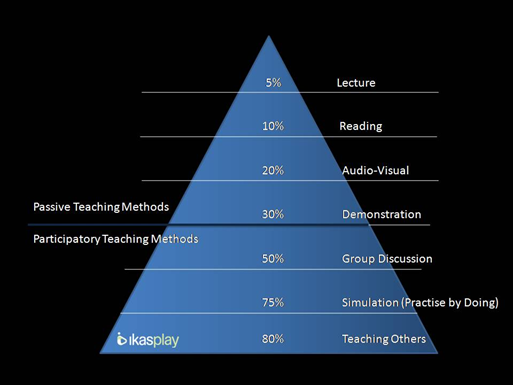Tell me and I forget. Teach me and I remember. Involve me and I learn

How many times have we found the same situation?
We build an online course with a quality theoretical content, we strive to advertise it and give access to our target audience, and then around the coffee machine we only hear that it was boring, that they fulfilled the procedure just to get the certificate or the grade they needed and that, after 2 months, they no longer remember anything.
To find a solution to this problem we must ask ourselves a question:
What do we remember most about everything we have learned in our lives?
It is not what we have repeated many times, neither what we have studied, but what is linked to a special experience, that although happened once, it is not forgotten.

A playful or gamified context always creates the conditions so that, consciously and unconsciously, what we do in a game environment is etched in our memory. This brings us the evolution of the concept “Learning by Doing” to “Learning by Playing”.
The aim is that training is seen as a game, either with the content, the methodology or with what surrounds the moment in which they are training. Using Serious Games as a training method is essential to achieve this goal.
Could you give me an example of a training methodology based on gamification?
A practical example where a training methodology, based on gamification, is being carried out, is the SUSMile Project, funded by the European Commission within the Erasmus+ program. The objective of the project is to develop a Serious Game based on strategic simulation, plus an online course that works with practical and innovative concepts, related to the sustainable last mile logistics.
The methodology is as follows: the project contains a Serious Game as a hooking tool for students, where in order to advance and successfully finish the simulation, they previously must have internalized some basic concepts about last mile logistics. These concepts are available in the Serious Game itself, in MOOC format (Massive Open Online Course) within the SUSMile platform.
Where is the “trick” of serious games based on simulation?
It is an eLearning training format focused on the development of skills through the practice of exercises in safe environments, before its application in the work environment. It is commonly used to implement new systems or processes, as well as to recreate interactive scenarios in sales operations, security protocols, industrial processes… In short, its trick lies in the fact that serious games based on simulation allow to reproduce a real life situation, so that the user can assimilate the contents through the experience.
Each person creates a story on a simulated scenario, based on his consecutive decisions, which always start from the previous situation generated by the person himself. In this way, it is possible to observe the impact of our own decisions in the medium and long term, learning from it in a scenario that simulates the theme or concepts to work on and learn.
The dynamics of making decisions, observing consequences and learning from mistakes, makes the user learn without realizing it, making easier to remember what he has practiced. Thanks to the stimulus, curiosity and reflection that virtual situations give to the user, it is possible to assimilate the needed experience, long before needing it in real life.
What benefits does it bring?
- It creates simulated environments that guarantee students the safe practice of competences, eliminating any type of risk derived from wrong decisions.
- It leads students through an immersive experience resulting in attitudinal change and increased productivity.
- The immersive experiences generated by the simulators increase the rates of retention and assimilation of knowledge, facilitating the subsequent application of the skills learned.
- Because people learn better through action, than through activities such as reading or observing a theoretical scenario, training through Simulation has become the best training option, generating a higher rate of satisfaction and increased engagement.